Marine Botany - Key Words
1/104
There's no tags or description
Looks like no tags are added yet.
Name | Mastery | Learn | Test | Matching | Spaced |
|---|
No study sessions yet.
105 Terms
Akinetes
survival structure (resistance)
in cyanobacteria
-main: agaisnt non-favorible conditions
-resistance to desication not really heat
-is a specialized cell, bigger, thick-walled, non-motile, dormant (with reduced metabolic activity)
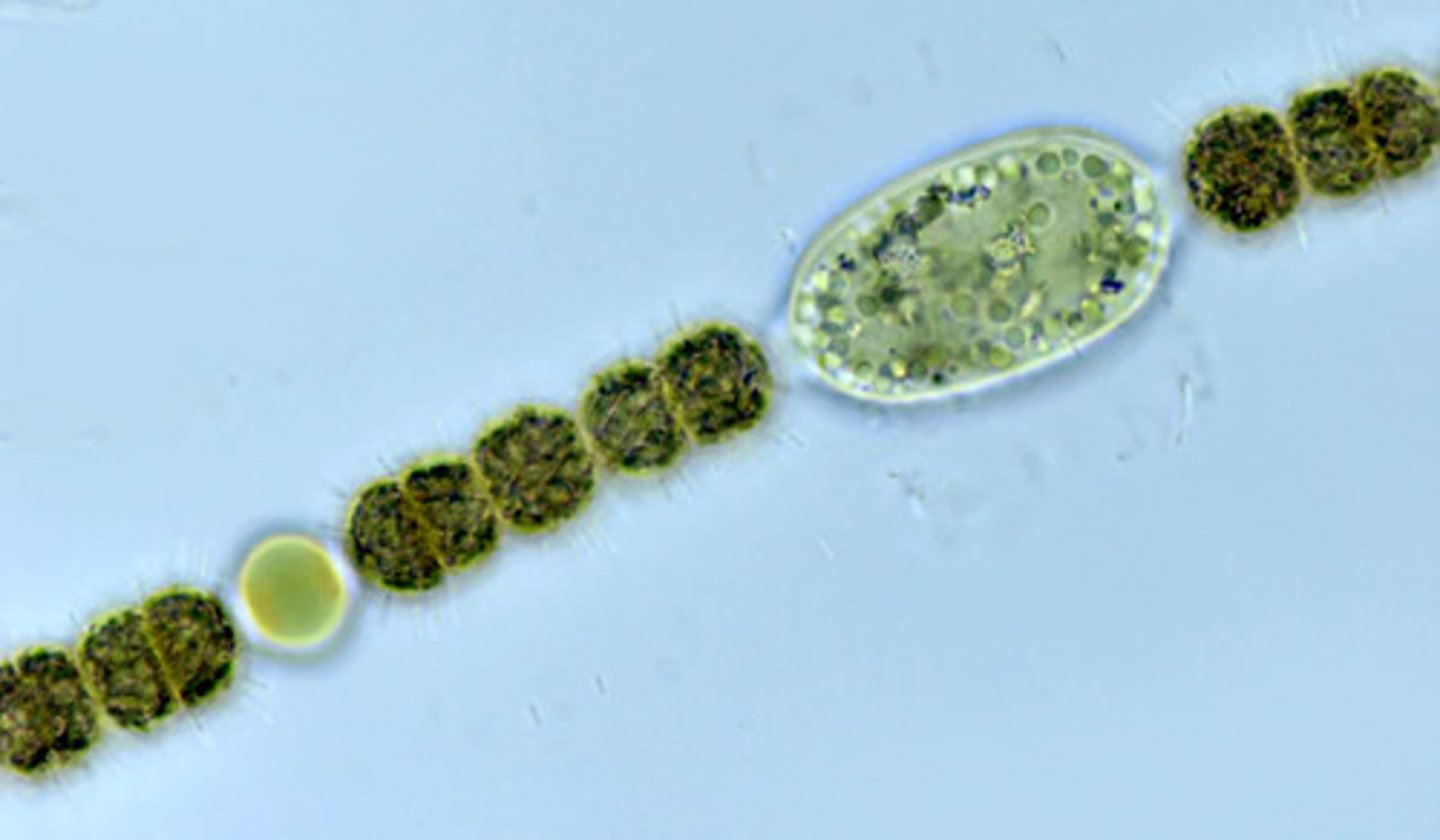
Heterocyst
-found in bacteria that fix nitrogen: cyanobacteria
-purpose: fix nitrogen from dinitrogen (N2) to N3 or N4
-N2 from air, converted using emzyme nitrogenase, provides cell N for biosythesis
-nitrogenase is inhibited by photosynthesis (no photo in this part)
-no pigment b/c no chlophyll
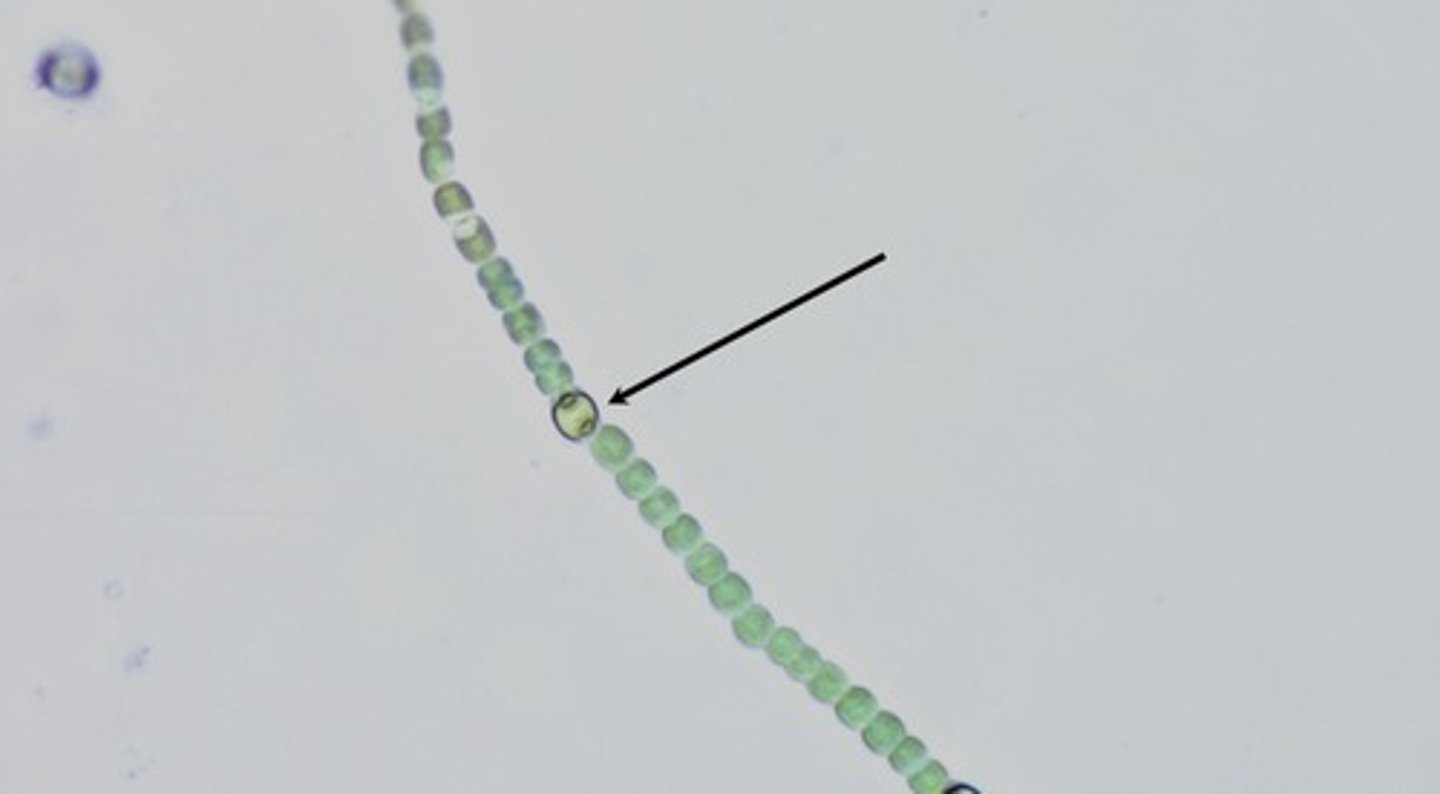
Aerenchyma
a soft plant tissue containing air spaces, found especially in many aquatic plants
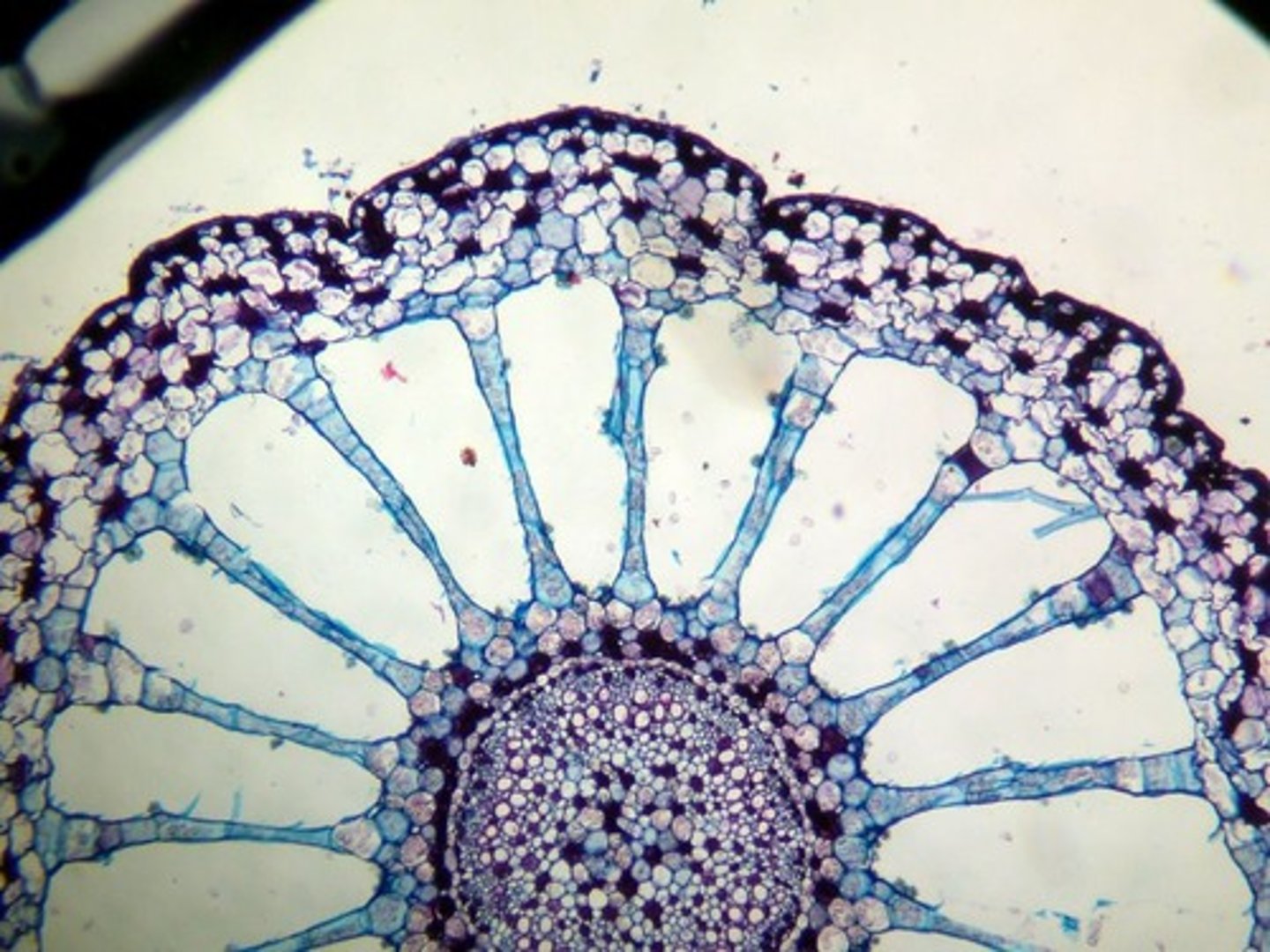
Hypotheca
small frustule or lid part of cell wall
-diatoms - smaller half of frustule cell wall
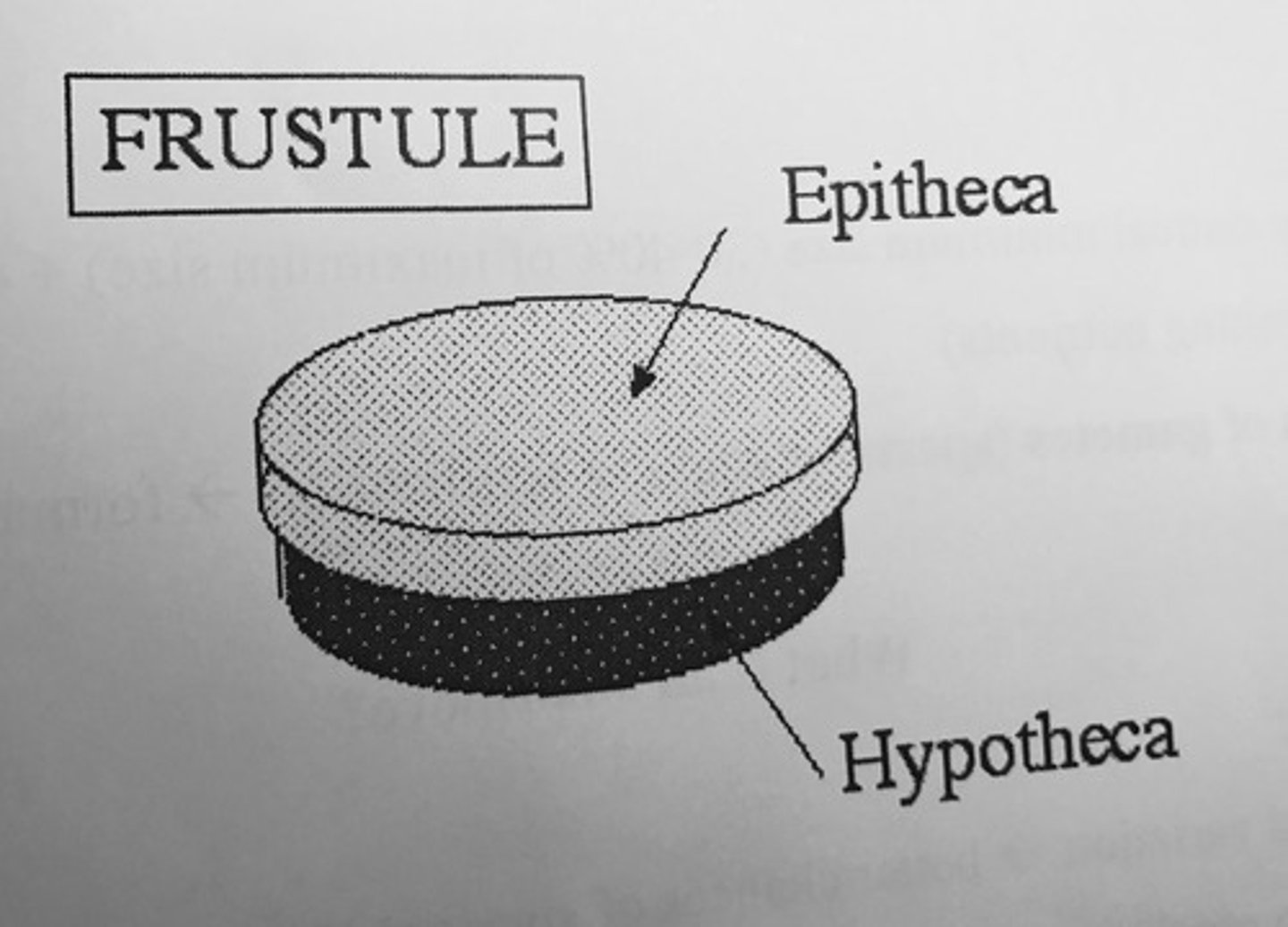
Marine Angisopermas Adaptations
-specialized respiratory systems for efficient gas exchange
-streamline body shape for swift movement (think seagrass)
-sensory developments to avoid predators
F-lexible and low lignified leaves that change with currents, without resistance, to avoid fragmentation.
-• leaves develop from an intercalated or basal meristem, so the oldest and, therefore, the most epiphytic part of the leaf, is the apex.
-Rhizomes, which are underground stems from which roots and shoots arise and which serve to fix the plant to the substrate. The stem therefore has no support function and serves to store reserve substances
-Total or partial disappearance of the cuticle, since its function (protecting the plant against drying) is totally useless.
-Disappearance of stomata, since they obtain gases through their entire surface.
-Formation of a special tissue called an aerenchyma which is a parenchyma with large intercellular spaces, which can reach 70% of tissue volume. These spaces facilitate gas exchange (mainly oxygen) allowing aerobic processes in the organs where photosynthesis is not carried out
Hormongium
-specilized reproductive cell --> used in
-regulates sexual reproduction in red algae
-in cyanobacteria
-cells that grow and generate new cyanobacteria
Anisogamy
-sexual repro
-union of DISSIMILAR size gametes
-male and female distinguishable
-both gametes or motile or both are immotal
Isogamy
-sexual repro.
-union of gametes of SAME size
-male and female not distinguishable
Oogamy
-sexual repro.
-union of large immotal female gametes (egg), with small motile male gametes
-male and female distinguishable
Lamina
-flattened structure makes up most of the thallus (plant body)
-EX: Laminaria: brown algae leathery and large

Kelp forest
coastal ocean community named for its dominant organism-kelp, a giant brown alga
-dense groups provide home and shelter to many organisms
-cool relatively shallow waters close to shore
Lenticellae
-macroscopic openings found on the surface and algae
-for: gas exchange and transpiration
-green. brown and red algae all have
Karyokensis
division of the nucleus
2 types: mitosis and meisosis
Mangroves
tropical trees that grow along coasts and help maintain the health of coastal environments
-complex salt filtration system
-complex root system that disapates wave energy
-convert co2 to organic carbon at highest rate of any ecosystem on earth
adaptations
aerial roots with the form of stilts, which allows them to anchor to the substrate. • specialized structures that promote gas exchange in the anaerobic mangrove soil. • tolerance to high levels of salinity • floating seeds for greater dispersion
Carpoesporophyte
-diploid life stage
-carried out by haploid female gametophyte in the cystocarp. Produces diploid carpospores
-in red algae
Carpogonium
In red algae, the female gametangium
-produces egg and is held here
-contains reproductive nucleas and many cells without chloroplasts
Cauloid
-mimic true stems, are actually structurally or developmently different
-support plant transport nutrients
-red green and brown algae have
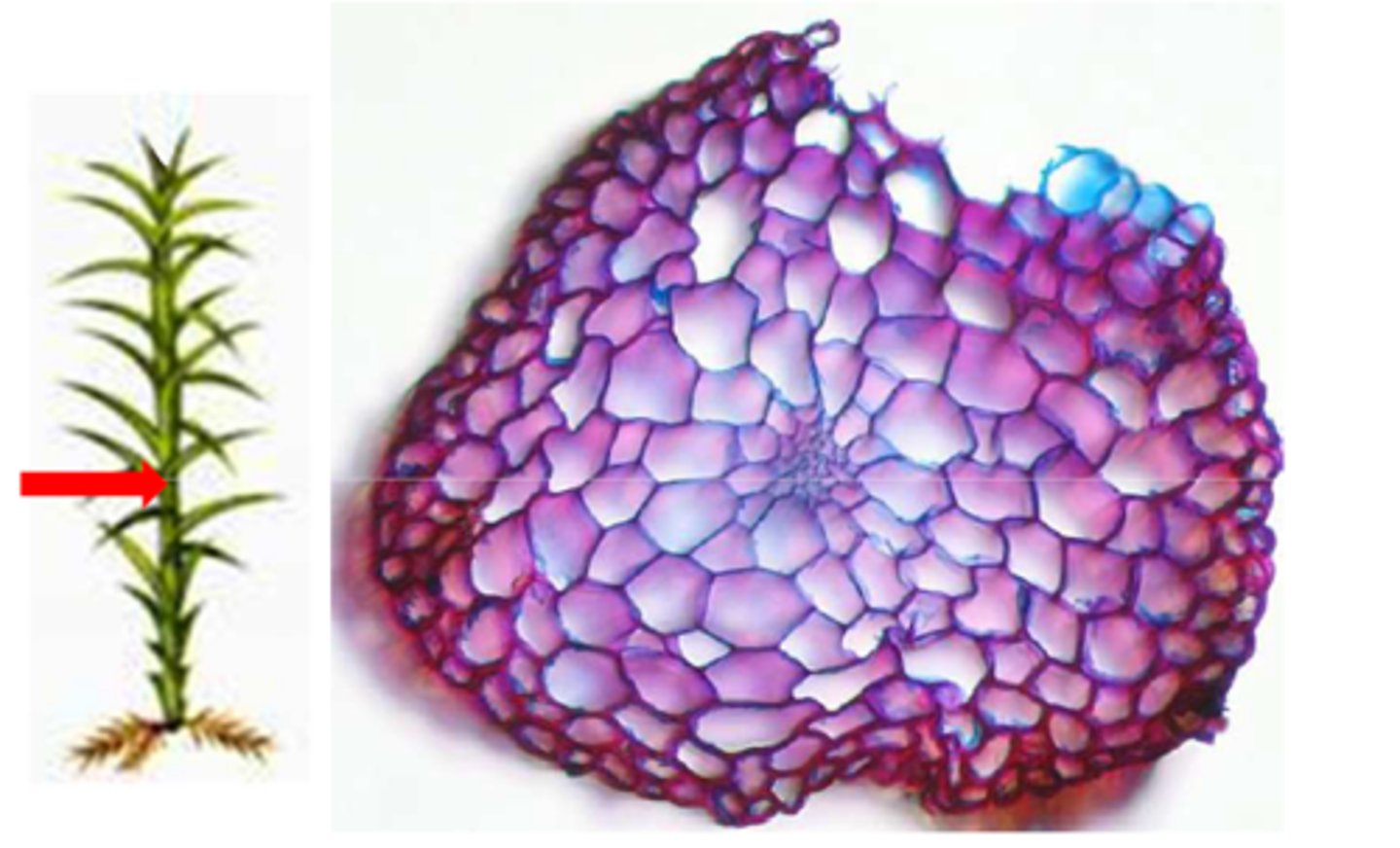
Sargasso Sea
-a sea named for the floating algae sargassum
-sargassum: brown algae highly productive; characteristics: air bladders allow to float to surface , leafy bronds, branched sturture,
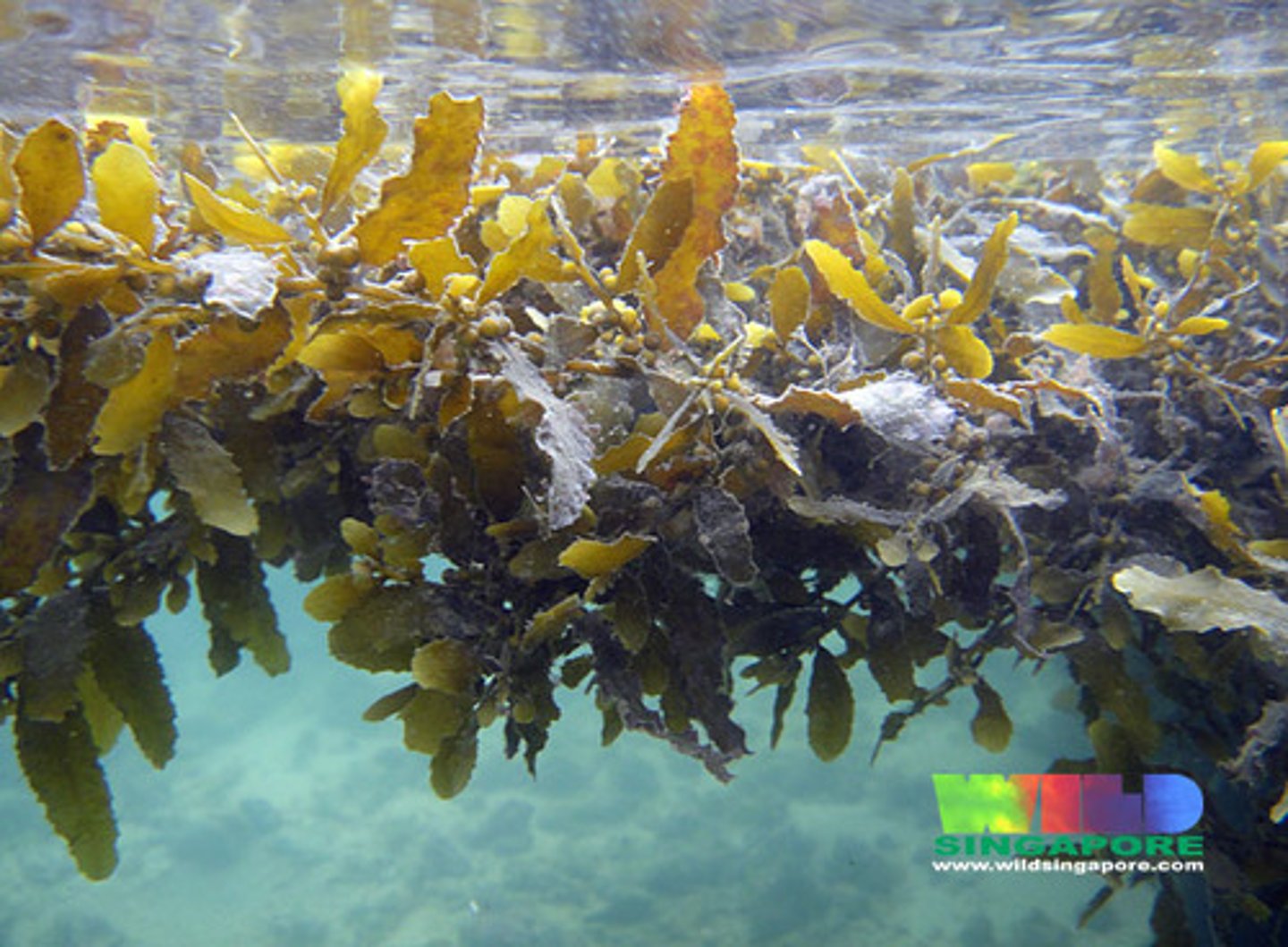
Red tides
A red, orange, or brown coloration of water caused by a bloom, or population explosion of algae; many cause serious environmental harm and threaten the health of humans and animals
caused by dinoflaggelate: Karenia brevis
Mastigonems
the hairs covering flagellum of protists
Trumpet cell
-elongated cell joined from end to end to transport photosynthate (sugar) through bodies of brown algae
Medulla in algae
the cell layer in the center of an algal thallus (vegetative body of algae). It is crucial for transporting water and metabolites throughout the thallus. The medulla contains sieve elements embedded in a gelatinous extracellular matrix
brown algae has
Centroplasm
granular and colorless area of cyanobacteria where DNA is located without a nuclear membrane
-in protoplasm (NO NUCLEAS)
Meiosis
Cell division that produces reproductive cells in sexually reproducing organisms
-produces haploid cells
in meiosis DNA is replicated and
n= # of chromosomes
x=# of chromatids
Meiosis 1: 2n1x --> DNA replicated 2n2x --> meisos occors so each cell has 1n2x
Meiosis 2: 2 cells with 1n2x are split into 4 1x1n cells
-produced 4 haploid cells
from slides:
Meiosis: it occurs in sexual cells. It is a process in which a diploid cell (2n) has two successive divisionsto generate four haploids cells (n)
Zygotic meiosis: is a meiosis of a zygote immediately after karyogamy, • Sporic meiosis: is a meiosis that occurs during the formation of spores. • Gametic meiosis: is a meiosis that occurs during the formation of gametes (n) (in gametangia
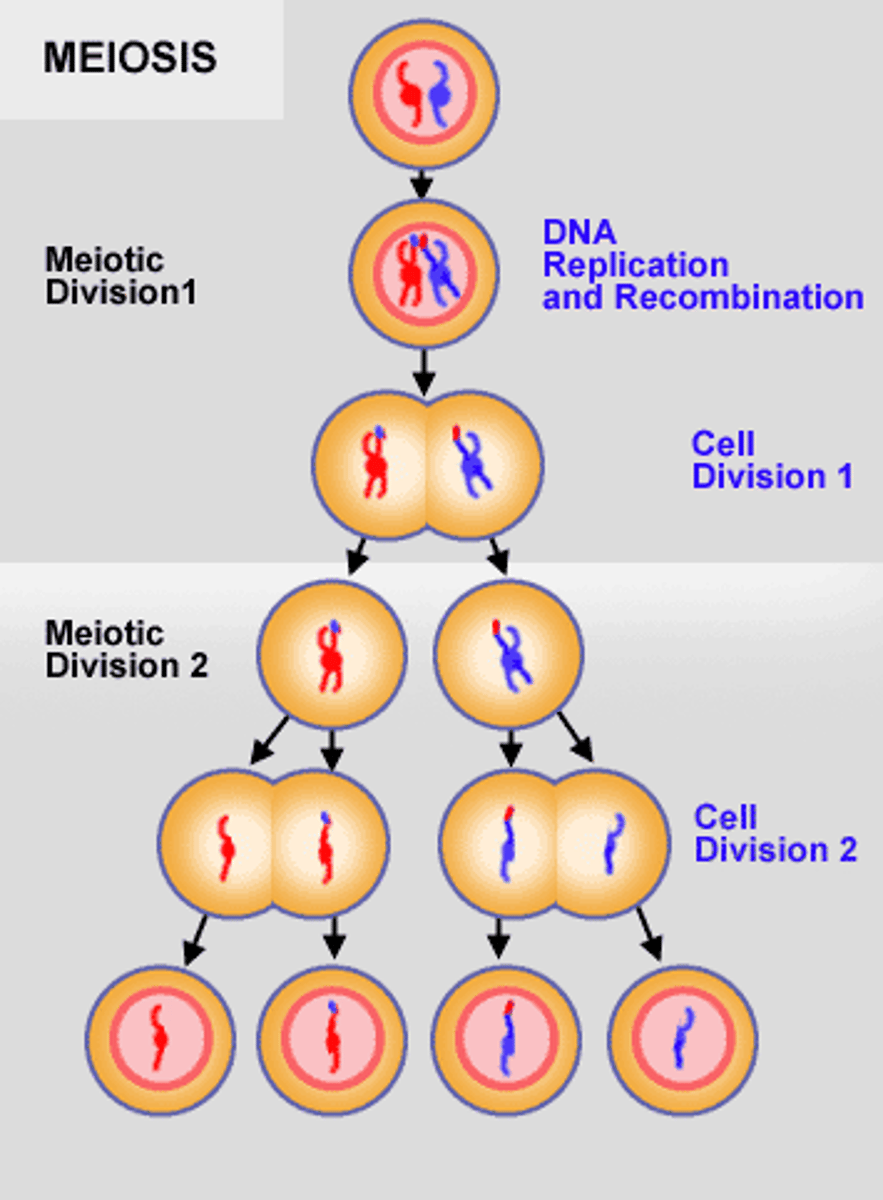
"Cyanelles" are?
Chloroplasts that contain peptidoglycan walls
Meristodermis
-there is a peripheral layer that is divided parallel to the thallus. Tissues are formed below the meristodermis (cortex). The thalli are dichotomous, tapered and with a central thickening (Fucus).
-in the most complex forms they can have a central medulla, very thick cortex and an outer layer for the growth of stem thickness
Cingulum
A transverse groove, the so-called cingulum (or cigulum) runs around the cell, thus dividing it into an anterior (episoma) and posterior (hyposoma) in dinoflagellates (they have flaggelum, whereas diatoms do not)
Mixotrophy
able to use autotrophy and phagotrophy or osmotrophy depending on conditions
-eugleophyta is an example of this as they eat organic matter and also coduct photosynthesis
-haptolophya is an example of this as their haptonema helps them with phagocytosis and they conduct photosynthesis
Cystosome vesicles
A cytostome (from cyto-, cell and stome-, mouth) or cell mouth is a part of a cell specialized for phagocytosis, usually in the form of a microtubule-supported funnel or groove. Food is directed into the cytostome, and sealed into vacuoles. Only certain groups of protozoa, such as the Ciliophora and Excavata, have cytostomes.
Pneumatocyst
a gas-filled bladder in seaweeds for buoyancy
-lifts blades to surface to recieve mroe sunlight
Cytokinesis. Types
-Cytokinesis is the process of cell division.
-It has two main types: one occurs in an animal cell by forming the cleavage furrow, and another occurs by plate formation in a plant cell. T
-he four primary stages of cytokinesis are initiation, contraction, membrane insertion, and completion. .
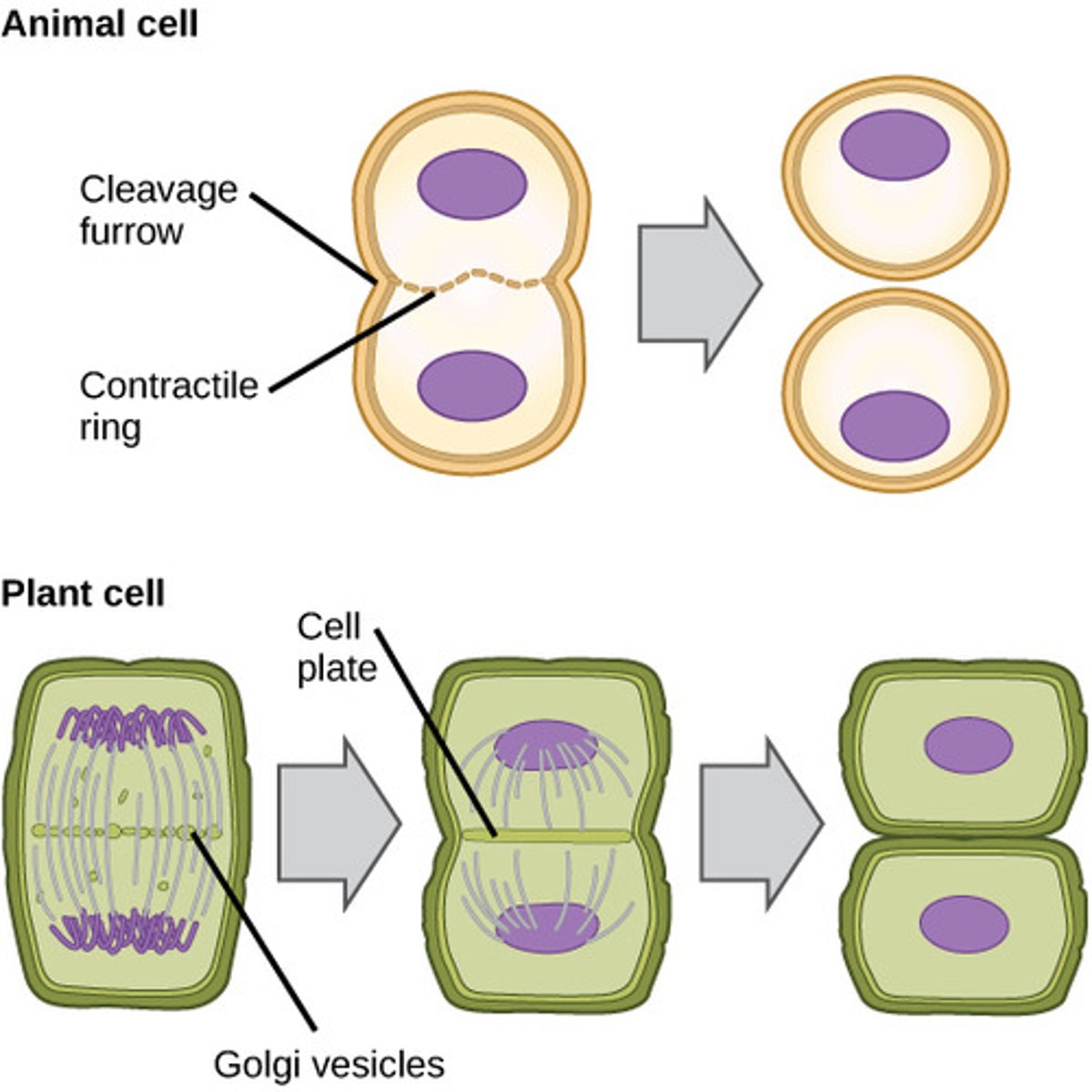
Pneumatophore
A specialized aerial root produced by certain trees living in swampy habitats; may facilitate gas exchange between the atmosphere and submerged roots.
mangroves have these
they are a type of root that grows upwards (negative geotropism), present in certain plants associated with bodies of water. The pneumatophores favor the oxygenation of the parts of the plant that are submerged under water.
Coccolith
-covering of haplophyta formed by the golgi appartus provide protection an buouancy, light regulation -scales of calcium carbonate
Coccoliths are individual plates or scales of calcium carbonate formed by coccolithophores
Coccosphere
The mineralized preservable shell of a coccolithophore.
whole shell made of coccolith
Levels of organization
Species: The most specific level.
Genus: A group of species that are closely related.
Family: A group of genera.
Order: A group of families.
Class: A group of orders.
Phylum (or Division for plants): A group of classes.
Kingdom: A group of phyla.
Domain: The most general level.
Dear King Philip Cooked oyster feta garlic Soup
Mesokaryotic nucleus
dinoflagellates
-inbetween pro and euk
-that is, they have the chromosomes concentrated during the interphase.
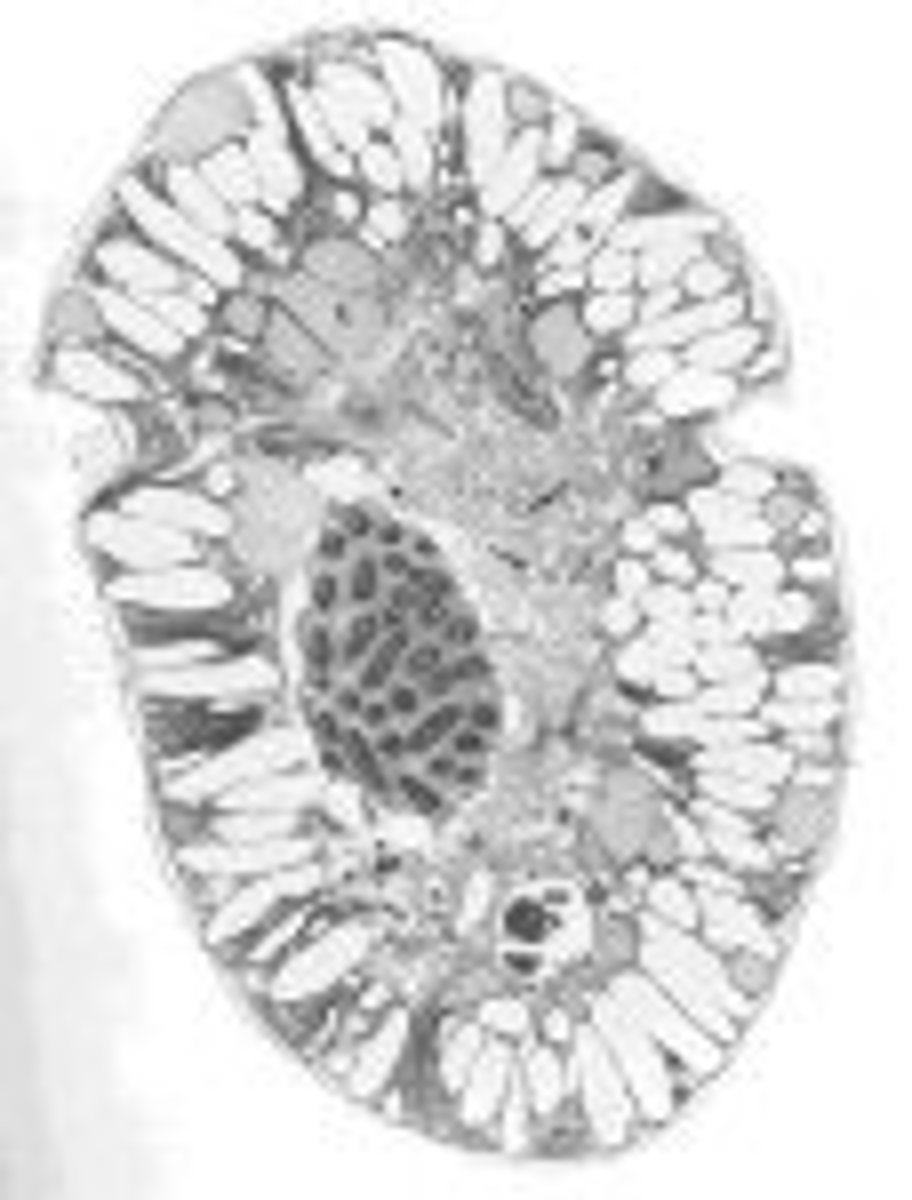
Conceptacle
in brown algae
is a chamber in a receptacle
that holds the gamete-
producing tissue
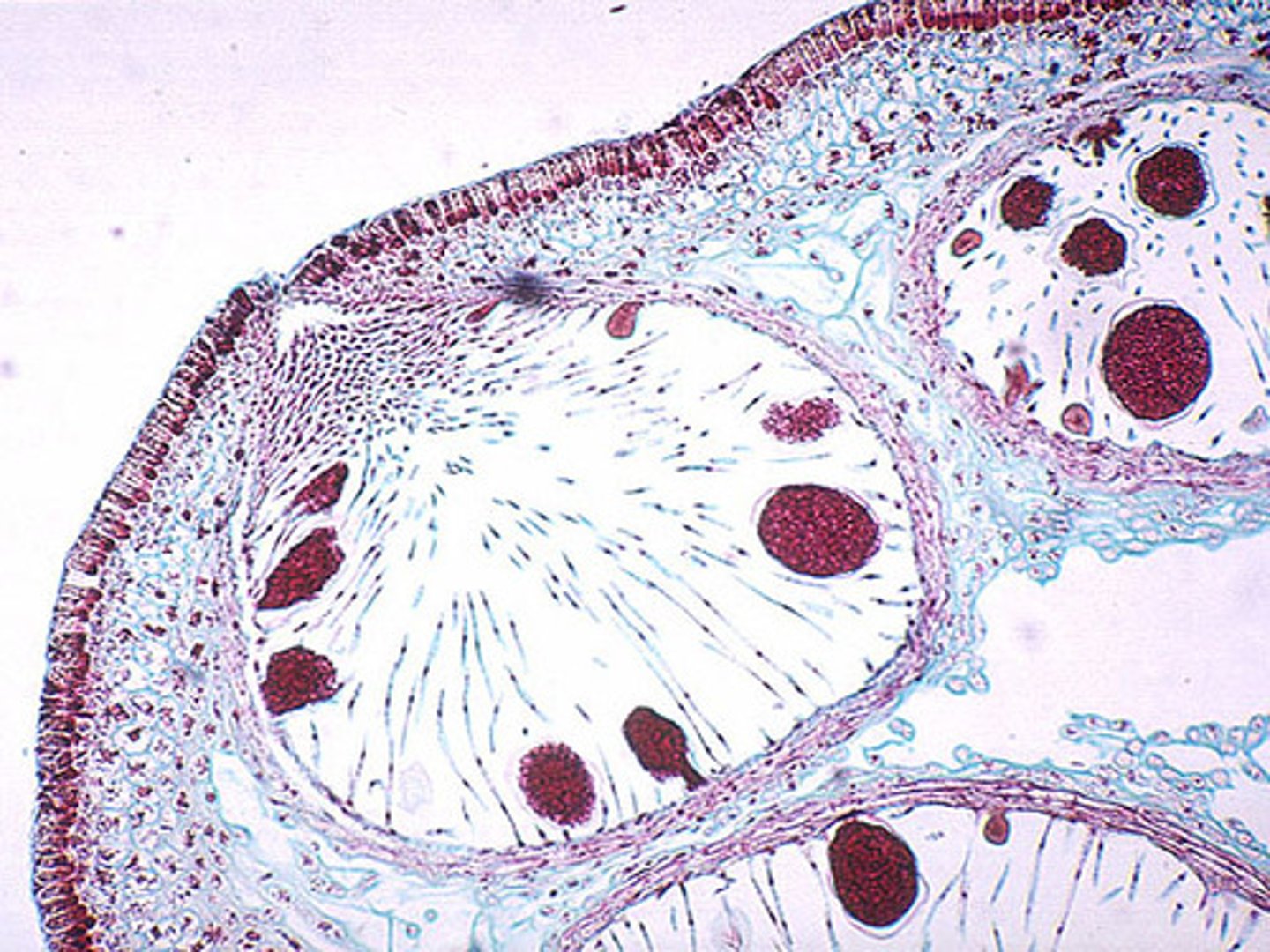
Nucleomorph
tiny vestigial nucleus
-nucleous of the phagocitated eukaryotic cell present with endosymbiosis
Cortex
inbetween medulla and merisdermis
Growth 4 types
Diffuse growth
All cells in the thallus (body) can divide and grow.
There’s no special growing point — the whole body grows evenly.
Apical growth
Growth happens at the tip of each branch or filament, where one special "apical cell" divides.
This tip cell makes new cells that build the branch and its side branches.
Marginal growth
Growth happens at the edges of the thallus.
New cells form at the sides, making the body spread out wide, like a sheet.
Trichothallic growth
Growth happens in certain cells that divide to form:
Body cells of the thallus
Hair-like protective cells
It can happen at the tip or at the edge of the thallus. apical or marginal
Cenocytic or siphoned organization
-Coenocytic algae (also referred to as siphonous algae) are large single cells that contain multiple nuclei housed within a common cytoplasm.
-coenocyte is a multinucleate cell which can result from multiple nuclear divisions without their accompanying cytokinesis
chromatoplasm
peripheral area of cyanobacteria where the pigments for photosynthesis are located; it is blue-green in color
Differences between centric and pennate diatoms.
centric diatoms have radial symmetry while pennate diatoms have bilateral symmetry
Unilocular organs vs Plurilocular organs
both: types of sporangia
UNI: single loculus or cavity, cooler temp, single cell
PLUR: multiple loculus or cavity, warmer temp, large # of cubiodal cells
Cell covers. Types
-Pellicule: Euglenophyta has this, flixible allows movemnt made of strips
Coccilids= haptophyta has this made of calcium carbolism forms coccilidsphere
mucilaginous coat for defense: cyanobacteria has this
cell wall (peptidoglycans): cyanobacteria has this: cyanelles
frustules: made of silica for protection, light manipulation and buoyancy -periplast: protien plates cell covering for
Pellicle
A firm, flexible coating outside the plasma membrane made of proteins
-organized in long strip
-euglena has this
DMS
-DMS originates primarily from DMSP, a major secondary metabolite in some marine algae. [5] DMS is the most abundant biological sulfur compound emitted to the atmosphere. [6][7] Emission occurs over the oceans by phytoplankton.
Periplast
-type of cell covering
protein plates disposed internally to the plasma membrane
Primary endosymbiosis vs. Secondary
Primary: the process in which a cell engulfs another living prokaryote, occurs first, neither cell depends on each other, results in the formation of the first membrane, which belongs to the smaller cell
Secondary: the process in which the eukaryotic cell engulfs another eukaryotic cell that has primarily undergone endosymbiosis, occurs later, smaller cell depends on larger cell, results in formation of 3 plasma membranes belongs to the first eukaryotic cell and the third membrane belongs to the second eukaryote
Pigments. Types
• Chlorophylls (a,b,c) ( a alwasy persent, all green)
Carotenoids (organic pigments from lipids) (ora/yel/red)
- Without O2 : carotens
b-carotene (universal pigment in algae)
-With O2: xanthophyills
Fucoxanthin in diatoms
• Phycobilins (in glauc, cyano, rhod)
thylakoids: where photosynthesis takes place, has gpigments here, can be gouped for euglena... or random or independant in red algae
Pits
a pit connection is a hole in the septum between two algal cells, and is found only in multicellular red algae
-allows the transfer of metabolites between neighbouring cells
Epitheca
Larger half of diatom frustule
-Cell wall consists of two overlapping halves
-Epitheca remains fitted over the hypotheca as a lid over the box. Each theca is further divided into two parts
Raphe
-pennate diatoms has a slit through the siliceous cell wall, called a "raphe," that functions in motility
Stigma
A light-sensitive organelle found in some algae and protists.
another term for eyespot
euglena has this
Flagellar roots. Types
Flagellar root: part of the basal body that fixes the flagellum to the cytoplasm of the cell. In algae we find differences, especially, in the transitional region and at the level of cytoskeleton (flagellar roots). These differences help the classification of many groups of algae, for example green algae
Paraflagellar Root
Function: Provides structural support for the flagellum.
Location: Extends from the base of the flagellum.
Example: Found in trypanosomes and other flagellates.
Role: Stabilizes the flagellum and often associates with the cytoskeleton for motility and coordination.
2. Flagellar Rootlet
Function: These are the most common type of root and are involved in stabilizing the flagellum by attaching to the cytoskeleton (like microtubules).
Location: Rootlets extend from the basal body of the flagellum.
Example: Observed in Chlamydomonas and other flagellated organisms.
Role: They help anchor the flagellum to the cell body and allow for movement coordination. They often work with the basal body to control flagellar beating.
Stipe
-stem-like part of the thallus of a mushroom or a seaweed, and is particularly common among brown algae such as kelp. The stipe of a kelp often contains a central region of cells that, like the phloem of vascular plants, serves to transport nutrients within the alga.
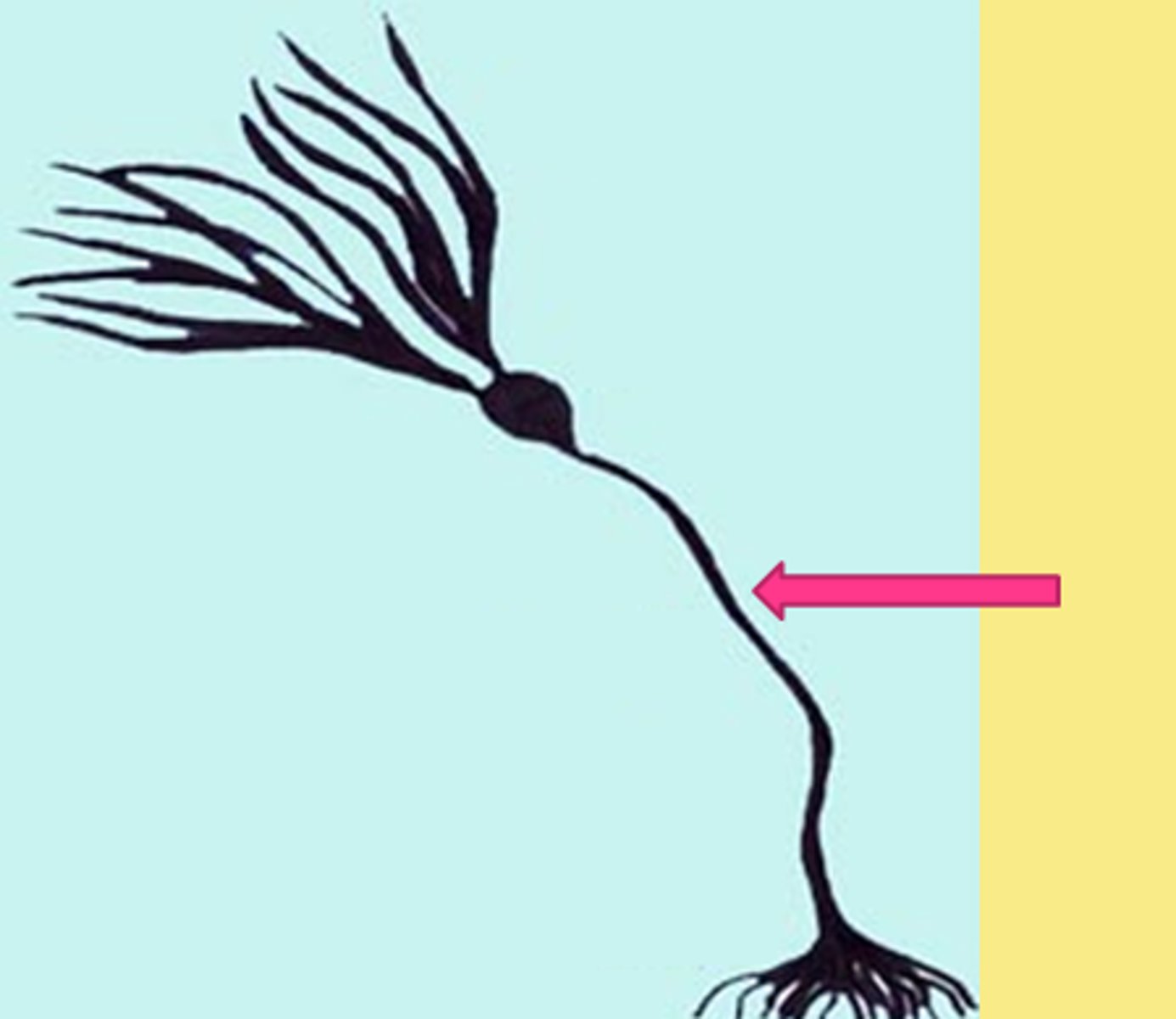
Stilt roots
A root morphology in trees that extends the roots above the ground, especially in low-lying areas where flooding is common.
- develop from the base of stem nodes in certain plants.
-They grow downward into the soil, providing mechanical support to weaker stems and facilitating faster vertical growth.
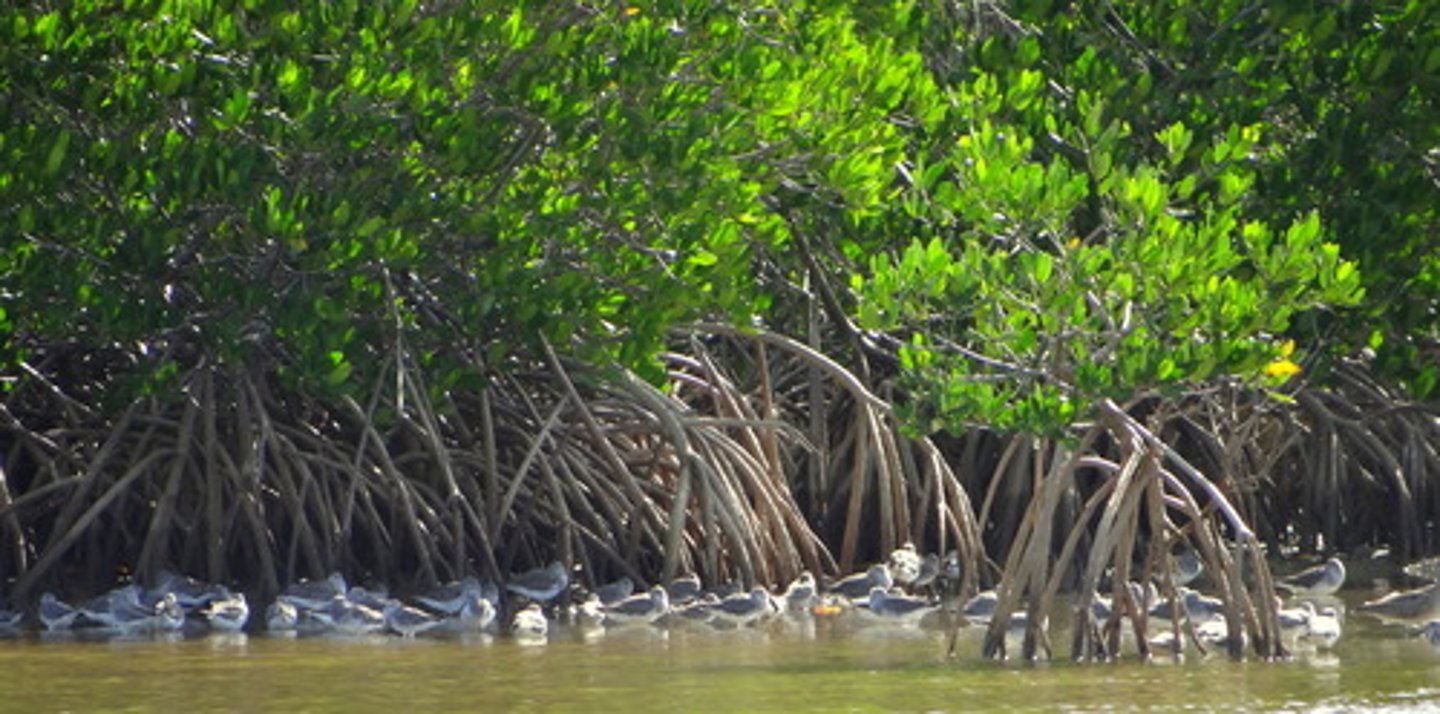
Ejectisomes
An ejectosome is a cellular organelle responsible for ejecting their contents from the cell.
Receptacle
the receptacle refers to vegetative tissues near the end of reproductive stems that are situated below or encase the reproductive organs
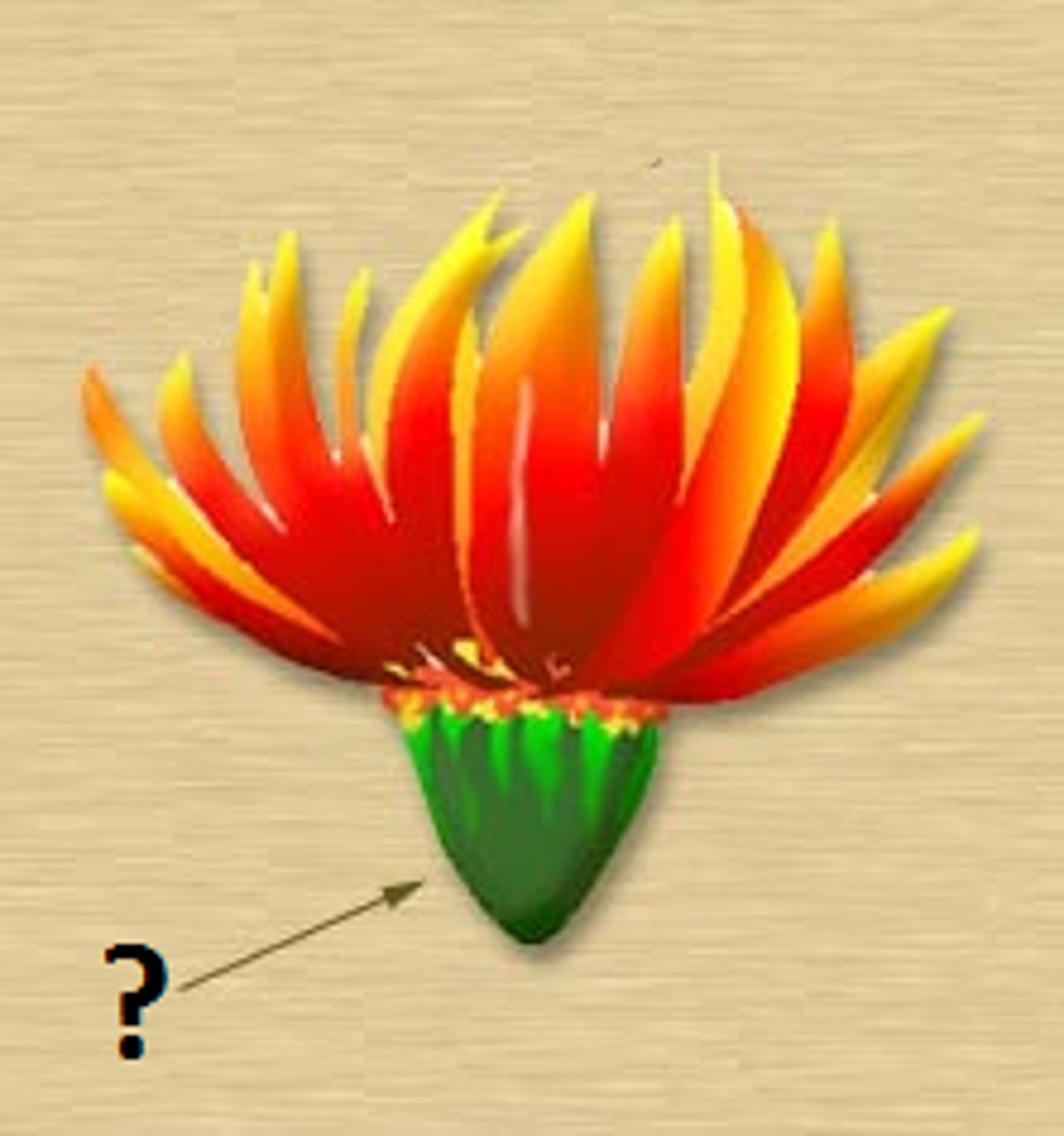
Conchocelis phase
A filamentous, sporophytic phase in the life cycle of bangialean red algae that produces conchospores in conchosporangia; commonly occurs in shells or other calcareous materials
Kingdoms/algae
Baceria (ex: Cyanobacteria)
Plantae (includes all red, green, glauc)
Fertilization. Types
Fertilization or syngamy: is the process by which two gametes are fused to create a new individual with a genome derived from both parents. • Isogamy: gametes are equal • Anisogamy: gametes which differ in size (smaller in males) • Oogamy: gametes which differ in form and size. (female: larger and nonmotile)
Asexual reproduction. Types
cellular division (binary fission), spores, fragmentation
Fragmentation • Thallus fragmentation: in multicellular forms. Non specific mechanism. • Trhough propagules. Multicellular units that can be separated of the thallus. Specific fragmentation. (special cells are the only ones capable of form a new thallus) Ej.Sphacelaria, Cyanophyta (hormogonium)
Spores: cells capable of developing into a new organism. • Spores are formed in specialized reproductive structures called sporangia • Thallus with sporangia are known as sporophytes. Spores are formed by meiosis or mitosis depending of the species • Mitospores: they come from mitosis (2n) • Meiospores: they come from meiosis (n)
Zoospores: with flagellum • Aplanospores: without flagellum (Ej. Red algae) • Autospores: similar in morphology to the parental cells but smallers. Ex: some species of Chlorella Statoespores o hypnospores: resting cells with a thick cell wal
Sexual reproduction types
Fertilization or Meiosis
Reproduction in which there are gametes fusion • Reproduction in which a process of meiosis is involved (formation of haploid gametes) • Reproduction in which a process of genetic recombination is involvedM
isoogamy, oogamy, anisogamy
Meiosis: we can distinguish • Zygotic meiosis: is a meiosis of a zygote immediately after karyogamy, • Sporic meiosis: is a meiosis that occurs during the formation of spores. • Gametic meiosis: is a meiosis that occurs during the formation of gametes (n) (in gametangia
Phycobilins
Accessory pigment that absorbs blue light, found in red algae
Phycobilins are light-capturing bilins found in cyanobacteria and in the chloroplasts of red algae, glaucophytes and some cryptomonads
Phycobilisome
A protein complex that captures light in photosynthetic bacteria.
Phycobilisomes are protein complexes (up to 600 polypeptides) anchored to thylakoid membranes. They are made of stacks of chromophorylated proteins, the phycobiliproteins, and their associated linker polypeptides.
Rhizoid
-Rhizoids are short, thin filaments found in fungi and in certain plants and sponges that anchor the growing (vegetative) body of the organism to a substratum and that is capable of absorbing nutrients
-Rhizoids absorb water mainly by capillary action in which water moves up between threads of rhizoids
-allows the alga to anchor itself to a sandy substrate from which it can absorb nutrients.
Phycocolloids
The three major phycocolloids are alginates, agars, and carrageenans. Alginates are extracted primarily from brown seaweeds, and agar and carrageenan are extracted from red seaweeds.
-A phycocolloid is a colloid derived from seaweed. A colloid is a non-crystalline substance with very large molecules that makes a viscous and sticky solution when dissolved.
Rodoliths
have been defined as calcareous nodules composed of more than 50% of coralline red algal material
Phycoplastare
a microtubule structure observed during cytokinesis in members of the Chlorophytina, the largest and most well known subphylum of chlorophyte green algae.
when divide its the plate that occurs inbetween the cells
Saxitoxin
a neurotoxin produced by some dinoflagellates
-in algal blooms is a problem
Phylloid
describe membranous leaflike calcareous algae found in late Paleozoic rocks. Phylloid means "leaflike" or "resembling a leaf"
sorus "
A sorus is a cluster of sporangia in ferns and fungi. A coenosorus is a compound sorus composed of multiple, fused sori.
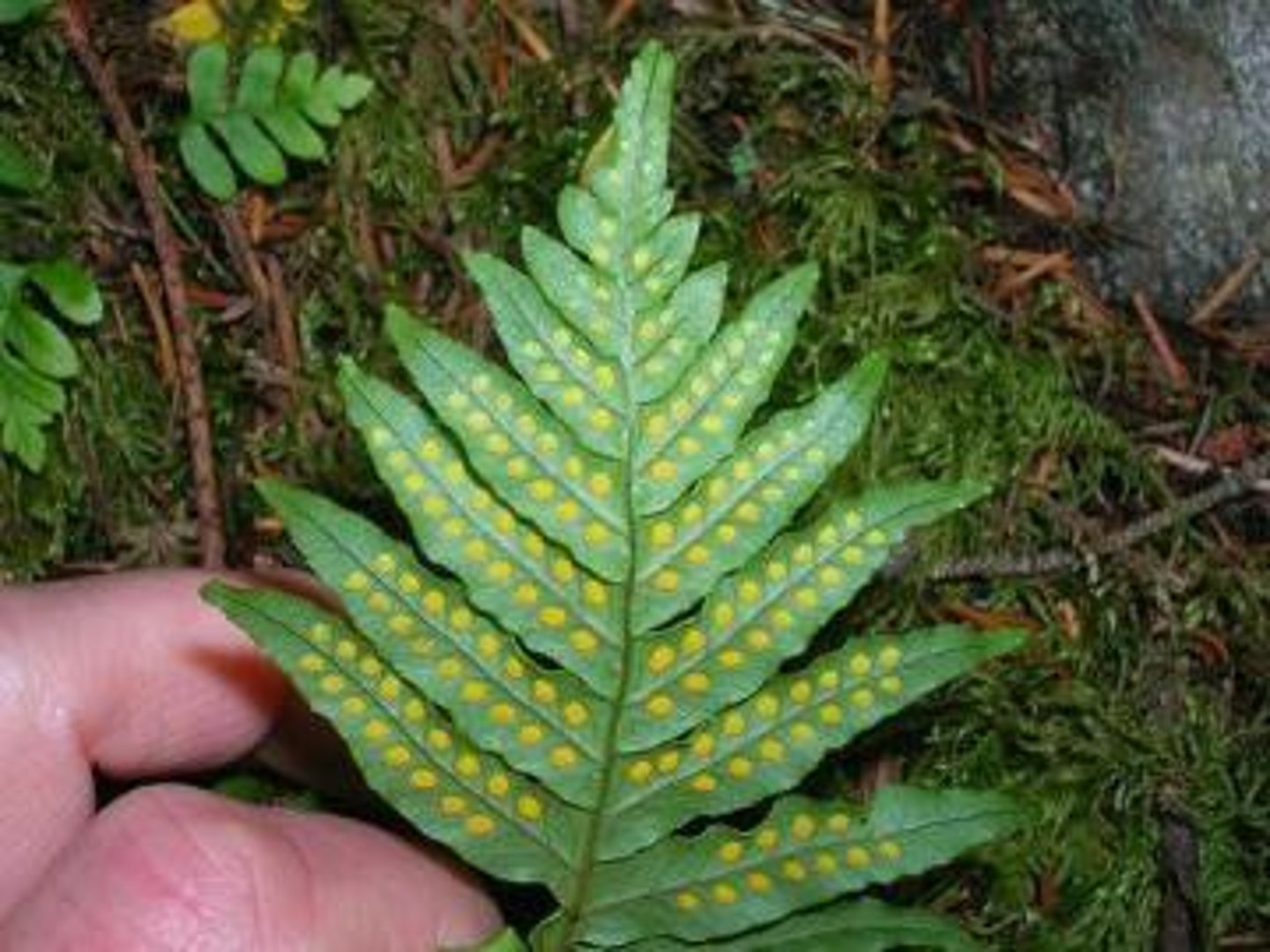
flagellum types
whiplike struture used for movement
isokont: flagella equal in length . Ej. Chlamydomonas (Chlorophyceae). •
Anisokont: flagella unequal in length •
Heterokont: flagella different between each other. One can be long, provided with fine hairs (mastigonemes) and another short and hairless. Eg Heterokontophyta. In this division, the insertion of the flagella is lateral. Mastigonemes appear in one of the flagella. Flagellum •
Stephanokont: many flagella in a area of the cell. They form a ring at one end of the cell. It is frequent in reproductive forms of some genus of green algae
Sulcus
grooves the flagellum is found is
Maerl beds
formed by calcareous red algae that grow as unattached nodules (occasionally crusts) forming dense but relatively open beds of coralline algal gravel.
Storage substances. Types
main storage product: chrysolaminarin for glucose
-lipid droplets: buoyancy regulation
-store energy in paramylon (form of carb)
-parmulon bodies found throughout cytoplasm help in survival when nutrients are scarce
Carbs: cyanophycean starch
Nitrogen: cyanophycin granules
Complexed inorganic polyphosphate (polymers): Volutin granules
Lipid droplets
Store material in akinete to resists non-favorable time periods
Democont forms
-flagella at some points -fully connected daughter cells multicellular
Theory of endosymbiosis
This theory states that cell organelles, like mitochondria, were once tiny, free-living prokaryotic organisms that took up permanent residence inside larger prokaryotic organisms.
Dinocont forms
The dinocont form refers to the unique morphological configuration of certain flagellates, particularly dinoflagellates, characterized by two flagella: one transverse (in a groove called the cingulum) and one longitudinal (in the sulcus). This form enables distinctive rotational or spiral locomotion, supported by specialized flagellar roots and a cellulose-based theca in some species. -pit connection between daughter calls making it collonial unicellular
Tetrasporophyte
-diploid carpospores that develop into tetrasporophytes. Certain cells of the tetrasporophyte undergo meiosis to produce tetraspores, and the cycle is repeated
-fern and seaweed life cycles
Phragmoplast
plant cell specific structure that forms during late cytokinesis.
It serves as a scaffold for cell plate assembly and subsequent formation of a new cell wall separating the two daughter cells.
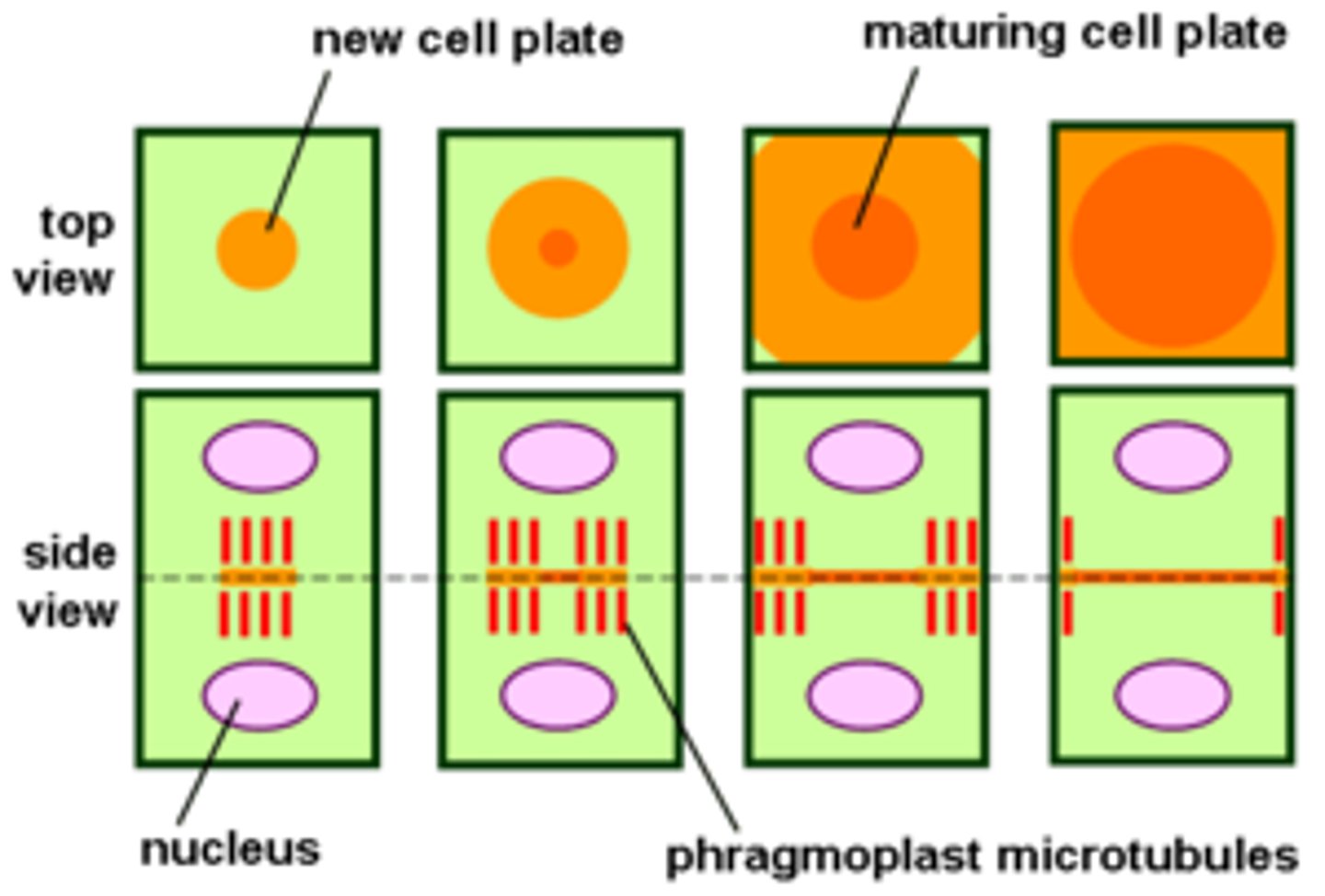
Trichogynous
An extension, often hair-like, from the female gametangium that receives the male gamete or nucleus prior to fertilization. It is found in certain green and red algae
Frustule
cell covering made of silica for protection, light manipulation and buoyancy
s -is the siliceous part of a diatom cell wall -The frustule's structure is usually composed of two overlapping sections known as thecae (or less formally as valves) It contains many pores and slits that provide the diatom access to the external environment
Utricle
small sac of airfilled cavity in seawood
haptonema
space between the flagellum of haptophyta it is used for attachment to substrate and feeding
Zooxanthella
a dinoflagellate that is an important symbiont of diverse marine microbes and invertebrates
-corals have symbiotic relationship wiht this
Types of flagellum
Isokont: flagella equal in length . Ej. Chlamydomonas (Chlorophyceae).
• Anisokont: flagella unequal in length
• Heterokont: flagella different between each other. One can be long, provided with fine hairs (mastigonemes) and another short and hairless. Eg Heterokontophyta. In this division, the insertion of the flagella is lateral. Mastigonemes appear in one of the flagella.
Stephanokont: many flagella in a area of the cell. They form a ring at one end of the cell. It is frequent in reproductive forms of some genus of green algae
types of mitosis
Closed mitosis: nuclear membrane remains intact.
• Metacentric mitosis: centrioles are located on one side Open mitosis: nuclear membrane loses his integrity.
Describe all the life cycles
endings to division, order, class, family
Division or Phyllum-phyta
Class -phyceae
Order -ales
Family -aceae
Rhodophyta
Mainly marine
• Bright red to violet color, although there may be blue-green algae.
• Phycobilins
• Agar and carrageenan
• Some species accumulate calcium carbonate
• They store floridean starch
• Complex life cycles
• Flagella is absent in red algae. Not appear at any stage of their life cycle
Chlorophyta
• Fresh and salt water
• Almost all levels of organization
• Reserve substance: starch
• Chlorophyll a and b plus accessory pigments (carotenes and xanthophylls) that do not mask chlorophylls.
• Green color.
• Economic importance (ex: bioreactors)
Phaeophyceae
brown algae
• Ecological importance (refuge habitats)
• Morphology: Brown algae exist in a wide range of sizes and forms (no single-celled organisms).
• Heterogeneous flagella at some stage of its development • Fucoxanthi
n • They store chrysolaminarin
• Economic importance (eg alginates)
trichomes
-colonial organization seen in cyanobacteria
-in linear chains
carboxysomes
polyhedral bodies packed with the enzyme Rubisco for CO2 fixation
in cyanobacteria
Stromatolites
Oldest known fossils formed from many layers of bacteria (prokaryotes) and sediment.
Nitrogenase
An enzyme complex, unique to certain prokaryotes, that reduces N2 to NH3.
in heterocyst
Necridia
Dead cells in cyanobacteria that disrupt the main filament to produce false branching or hormogonia.
false branching
branches arising from breaks in a cyanobacterial filament
branched arrangement of the cells of certain filamentous bacteria and algae resulting from a slipping of the end of one cell past that of another following cell division